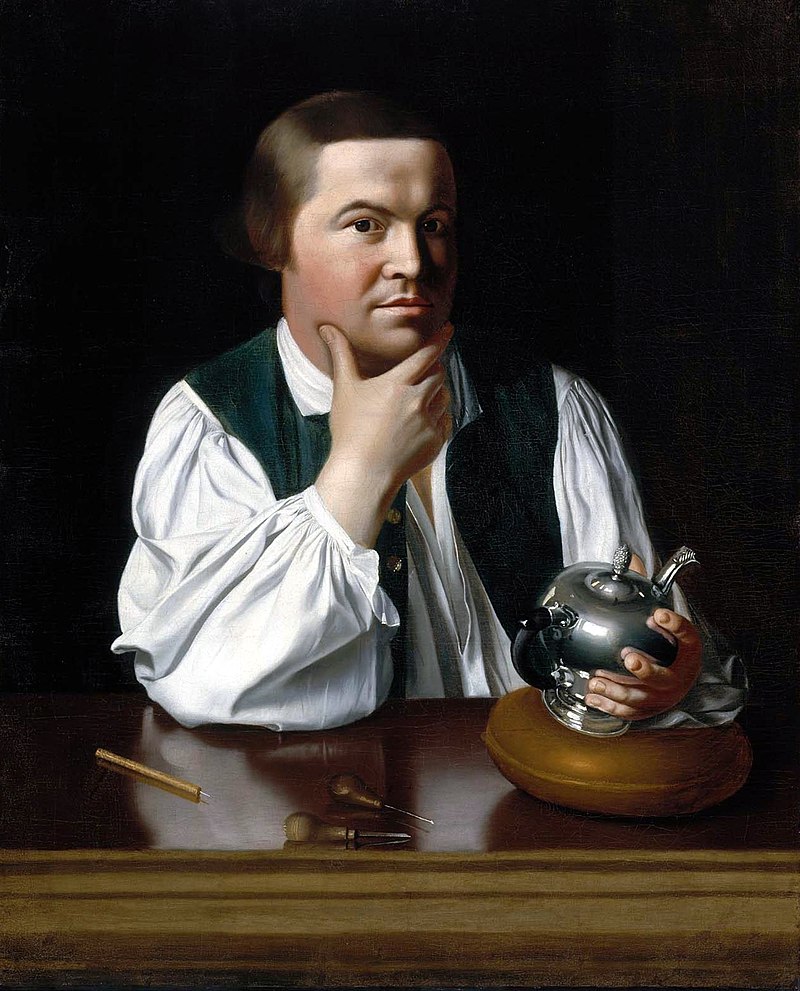Parliamo questo mese della storica cavalcata di Paul Revere.
“Listen my children and you shall hear of the midnight ride of Paul Revere”. This is the start of a famous poem, by Henry Wadsworth Longfellow, which made Paul Revere known to people all over the United States. Paul Revere was a Boston silversmith who was part of the Sons of Liberty, an organization that opposed British taxation. He was among the first to join a web of spies that monitored British movements. During the spring of 1775, he gathered intelligence that the British troops planned to seize the weapons of the rebels and possibly capture their leaders, Samuel Adams and John Hancock. He then talked to the sexton of the North Church to send a message to the colonists regarding the route taken by the troops. The sexton would have to use lanterns in the church’s steeple, “one if by land, two if by sea”. On the night of April 18, the signal arrived that the troops would move by sea and Revere and William Daves were sent to warn Adams, Hancock, and the other rebels all the way to Concord. They rode by night and managed to get to Lexington and warn them but Revere was captured in the final leg of the journey. He was released but his horse was taken and he had to go back to Lexington on foot. When he reached the city, the battle of Lexington, and the American Revolution, had just begun.
“Ascoltate, bambini, e sentirete della cavalcata a mezzanotte di Paul Revere”. Questo è l’inizio di una famosa poesia di Henry Wadsworth Longfellow, che ha reso Paul Revere famoso in tutti gli Stati Uniti. Paul Revere era un argentiere di Boston che faceva parte dei Figli della Libertà, un’organizzazione che si opponeva alla tassazione britannica. Fu tra i primi a unirsi a una rete di spie che monitorava i movimenti britannici. Durante la primavera del 1775, raccolse delle informazioni sul fatto che le truppe britanniche pianificavano di sequestrare le armi dei ribelli e possibilmente di catturare i loro leader, Samuel Adams and John Hancock. Parlò quindi al sagrestano della North Church per mandare un messaggio ai coloni sulla rotta che le truppe avrebbero preso. Il sagrestano avrebbe dovuto usare delle lanterne nel campanile della chiesa, “una se per terra, due se per mare”. Nella notte del 18 aprile, il segnale arrivò che le truppe si sarebbero mosse per mare e Revere e William Daves furono mandati ad avvertire Adams, Hancock e gli altri ribelli fino a Concord. Cavalcarono di notte e riuscirono ad arrivare a Lexington e avvertirli ma Revere fu catturato durante l’ultimo tratto del viaggio. Fu rilasciato ma il suo cavallo fu sequestrato e dovette tornare a Lexington a piedi. Quando raggiunse la città, la battaglia di Lexington, e la Rivoluzione Americana, erano appena iniziate.

